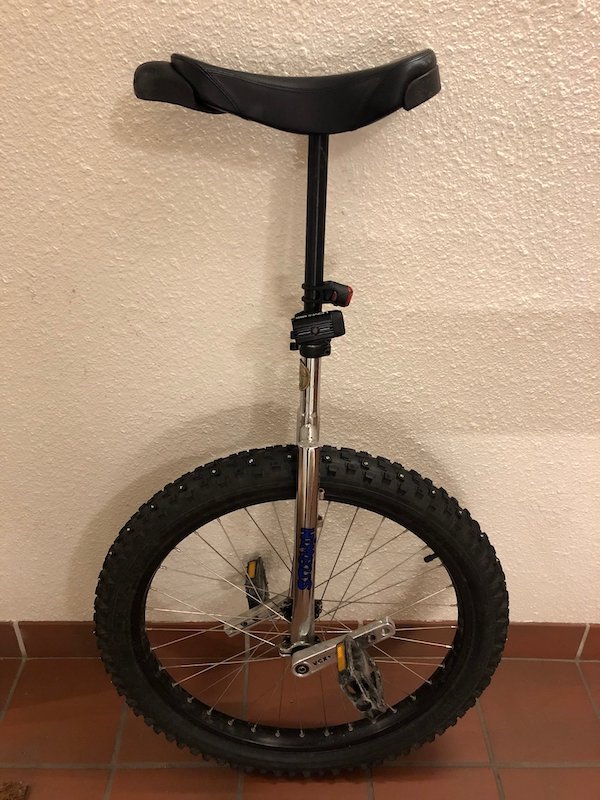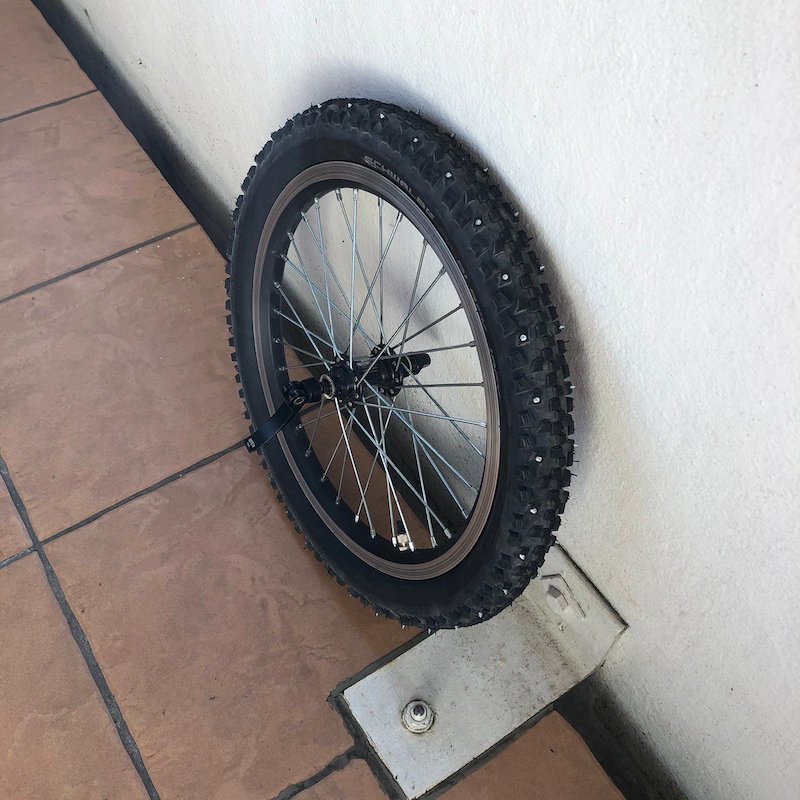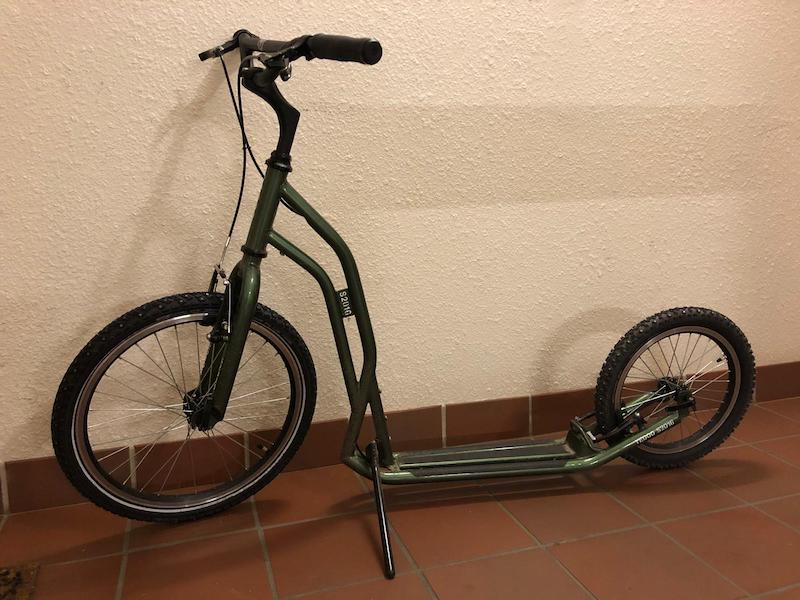Winter cycling tips and tricks ❄🚲
If you regularly cycle in snow and ice, Winter/Studded tyres are amazing and are pretty much always the best option but they are pricy and not available for all tyre sizes. As a unicyclist (yes I ride in the winter) and footbiker, I have various cycles with tyre sizes from 16” to 36” (Ok… I also have a penny farthing with a solid rubber 54” tyre 😆).
If you cannot get tyres in your size or cannot justify the cost for very limited usage, here are a few quick tips.
Cycling on regular/unstudded tyres
Riding on ice with normal tyres is entirely possible in much the same way that walking on ice is, so long as you are careful. The key is to avoid sudden movements, such as changes in direction and speed. With that in mind, here is a quick summary of some tips.
- Cycle slower: This gives you more time to observe problems and means less harsh braking.
- Keep it consistent: Try and keep your speed as consistent as possible. When you do need to stop, slow down very gently.
- Watch the road: Keep your eyes looking ahead for issues, to give yourself the maximum time to avoid them.
- Avoid turning: Keep straight when possible or take slow, wide turns if you have to.
- Drop tyre pressure: This will make cycling more effort but vastly increases grip due to the increased contact surface area.
- Pick your position: Avoid the very edge of roads (i.e. the gutter). Water (and hence ice) collects here and the surface is generally bumpier. Sometimes cycling in car tyre tracks is better (more worn). On the flip side, cars can polish ice and hence the middle of the lane might actually be preferable. You'll need to judge that for yourself 🤔 but with some experience it gets a lot easier.
ℹ The above is also handy if you find yourself caught off guard, with weather you did not expect. 👍
Studding your own types
Option one: Buy tyre studs
There are products which you screw into the tyre from the outside in. Try and find ones designed for bicycles specifically. They tend to be shorter and are therefore much less likely to go completely through the tread and puncture your inner tube. You normally need a special dedicated tool to screw these in, remember to buy that at the same time.
Bestgrip screw in studs (Norwegian site)
Tool to screw in tyre studs (Norwegian site)

PROS
- Very easy to stud (just screw them in)
- Tungsten carbide (exceptionally long lasting)
CONS
- Pricy (it usually works out more expensive than buying a commercially studded tyre)
- You need deep tread on your tyre (otherwise the studs will screw right through to the inner tube and puncture it).
ℹ Spend some time thinking about your pattern. The edges are better than the centre line, which would have a higher wear rate and increase your rolling resistance. Also, you do not want to overly stud because it adds weight and is simply unnecessary. Commercial winter tyres are heavily studded because a high stud count gives a 'selling point' to the buying public.
Option two: Use short screws (yes… really)
If purpose built tyre studs make no sense because your tyre does not have a suitably thick tread or you just bulk at the cost, you can self-stud tyres with screws. It sounds weird and scary but it can work well. The only downsides are the time it takes and the fact that unlike Tungsten carbide, steel wears much faster on a tarmac surface, so you may need to re-stud from time to time.
I have self-studded a 16”x1.9” (47-305) Schwalbe "Black Jack" using this method (there are no commercial studded tyres for a 305mm rim) with small, steel screws. I would have preferred to use screw in studs but the tread was not deep enough. On the plus side it is very cheap. A Schwalbe "Black Jack" tyre only cost me ¤89🇳🇴 (€8.60, $10.30🇺🇸, £7.60) and I bought a box of 250 screws for ¤35 (€3.40, $4, £3) of which I only used a fraction. That works out at just ¤124 (€12, $14.30, £10.60) total for one tyre. Granted it would have been more if I also bought a dedicated tyre liner, which many people would need (or want) to do.
Mr. Tuffy (a popular, high performance tyre liner for bikes)

The basic process works like this.
- Drill guide holes through tread at points where you want studs. Do this from the outside in so that you get the pattern you want/expect. (see also the Tip in the previous section).
- Screw in short (9.5mm, ⅜”) screws from the inside of the tyre, outwards through your guide holes (These screws will be held in place by the tread rubber and back pressure from the inner tube on the screw heads).
- Line tyre with a dedicated "tyre liner" or failing that a few layers of duct tape, plus an extra old (damaged) inner tube, split and wrapped around the main tube. (The linings are to minimise the chance of pinch flats, caused by the screw heads moving/flexing against the tyre and catching the main inner tube, whilst in use).
Self-studding a tyre in more detail (a longer guide)

ℹ Ideally the 'studs' should only stick out 2-3mm. Keep an eye on them during the course of the season. When they start to get too short, take off the tyre, and re-stud it.
Enjoy your winter riding! ❄🚲👍
⁂
/gemlog/